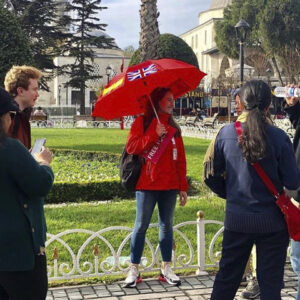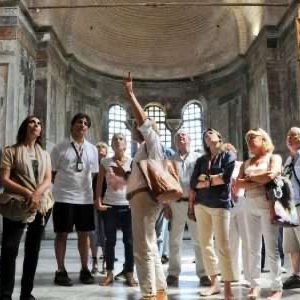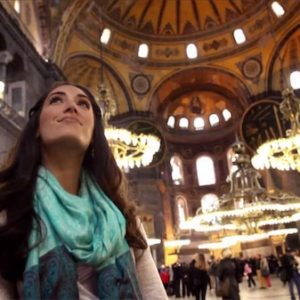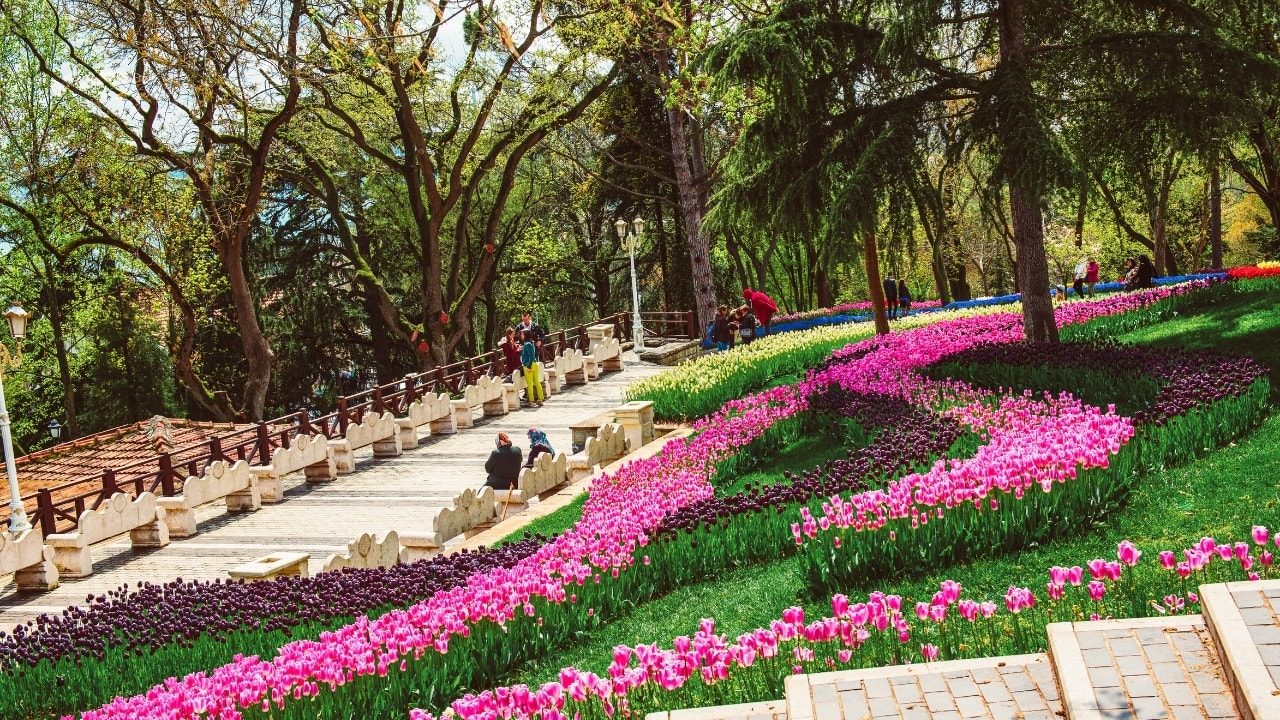The Library of Celsus: A Monument to Culture and Memory
Built in 135 AD in the ancient city of Ephesus, the Library of Celsus was commissioned by Gaius Julius Aquila in honor of his father, Gaius Julius Celsus Polemaeanus, the proconsul of the province of Asia. This building stands not only as a symbol of knowledge and culture but also as an exceptional tribute, as it houses Celsus’ tomb—a rare burial permitted by special request from his son.
Architecture and Design of the Library
The Library of Celsus is remarkable for its imposing two-story facade. The lower floor has three entrances, while the upper floor features three windows. The columns on the sides are shorter than the central columns, creating a visual illusion that makes the structure appear taller in the center.
The Statues Representing Celsus’ Virtues
Flanking the three entrances of the library are four niches with statues representing Celsus’ virtues: Sophia (Wisdom), Arete (Valor), Ennoia (Thought), and Episteme (Knowledge). These statues enhance the symbolic nature of the site, reflecting the character and values of the man to whom this monumental building was dedicated.
The Statue of Athena
It is believed that in the semicircular niche on the ground floor, opposite the central entrance, there was once a statue of Athena, the goddess of wisdom. Although no remains of this statue have been found, its hypothetical presence would add another layer of symbolism to the library, reinforcing its purpose as a place of wisdom and learning.
Function and Spaces of the Library
In addition to housing a collection of writings, the Library of Celsus may have included an auditorium for lectures or presentations. This space, possibly situated between the library and the marble road, would have served as an intellectual gathering point for idea exchange in Ephesus.
The Library’s Interior
The library’s interior was designed to store scrolls and manuscripts in niches along the walls. Although only the facade remains today, the interior design was likely intended to preserve and organize texts in a suitable environment.
Transformation of the Library into a Nymphaeum
Over time, as Ephesus’ population declined, the library’s interior was destroyed. However, the facade was preserved and repurposed as part of a nymphaeum (a monumental fountain). During this transformation, marble slabs from the Monument of the Parthians, which commemorated Lucius Verus’ victory over the Parthians, were used.
The Slabs from the Monument of the Parthians
These slabs, which were part of the nymphaeum, are now on display at the Ephesus Museum in Vienna. Their inclusion in the library’s transformed facade as a nymphaeum shows the practice of reusing architectural materials from ancient monuments in new constructions, reflecting respect and reverence for the past.
Reconstruction of the Facade
Between 1973 and 1977, the facade of the Library of Celsus was reconstructed. This process involved advanced techniques to make the structure earthquake-resistant, ensuring the preservation of this historical monument for future generations.
Tips for Visiting the Library of Celsus
- Location: The Library of Celsus is situated in the heart of the Ephesus ruins, a key point in the archaeological tour of the ancient city.
- Best Visiting Time: It’s recommended to visit early in the morning or late in the afternoon to avoid peak heat and enjoy the natural lighting on the facade.
- Respect the Site: Given its historical value, visitors are asked to respect designated areas and refrain from touching the structures.
Conclusion
The Library of Celsus is not just a place of knowledge and learning, but a tribute to a man and his virtues. Its impressive facade, statues representing virtues, and the story behind its construction and restoration reflect the grandeur of Ephesus as a cultural center in antiquity. Visiting the Library of Celsus is an opportunity to connect with the cultural legacy of ancient Rome and admire one of the architectural gems of the classical age.














3 thoughts on “The Library of Celsus”
★★★★★
My journey to ‘The Library of Celsus’ was nothing short of amazing. A must-see for anyone exploring the area!
★★★★★
Looking for an authentic and enriching experience? ‘The Library of Celsus’ is the place to be! Absolutely worth the visit.
★★★★★
Discovering ‘The Library of Celsus’ was one of the highlights of my trip. Don’t miss out on this gem!